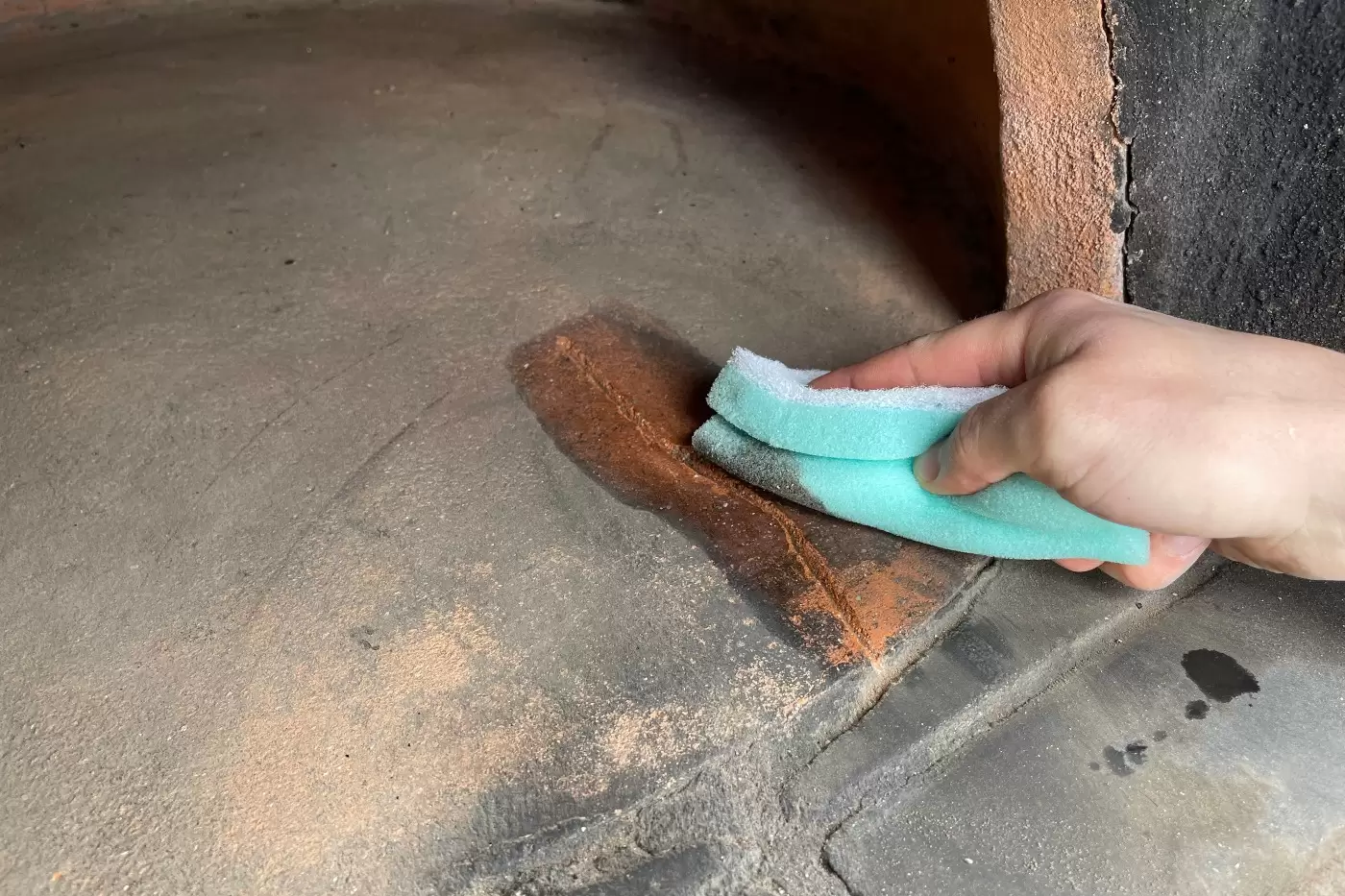Heating a wood-fired oven will create small natural cracks and dilatations to appear on the interior of your clay oven. This is a completely normal and natural process due to the thermal dilatation of structures and does not affect the normal functioning of the oven. These natural cracks and dilatations can be seen in many structures such as buildings, bridges or chimneys.
Ensuring that you cure your oven when its new or if the oven has not been used for a while or if it’s damp, is the correct way to progressively heat the interior of the oven, so the claydome adapts better to the changes in temperature and for any humidity to disappear before use.
After the curing process has been completed, one of the most typical types of cracks that may appear, are fine hair line cracks on the base and walls of your Fuego wood-fired oven.

We must stress that these cracks are only cosmetic and will not impact on the performance of your oven. If you cannot live with the look of them, here’s our step-by-step guide on how to repair all internal cracks of your Fuego wood-fired oven:
If it’s a hair line crack, start by opening the crack with the help of a screwdriver, until you have a crack wide enough to be able to fill it. For larger cracks, ensure you remove any loose debris of clay and keep any larger pieces so you can stick them back up. The recommended joint thickness is 3-5mm.

Brush or blow any excess of dust from the crack.

Wet the opened crack with a sponge to ensure the mortar mix sticks correctly.

Ensure you use a quality ready mixed refractory mortar of over 1200°C.

Using a spatula, fill the crack with the refractory mortar, ensuring you spread it evenly. If you have any large loose pieces of clay, spread the mortar on the open crack (recommended joint thickness is 3-5mm) and sit the piece on top, ensuring the edges are well sealed with mortar.

Drying and hardening will be helped by the application of gentle heat as soon as the work is completed. The setting time is 24 hours at 20°C (increasing temperature will reduce the setting time). Once dry, rub the area with a damp sponge in circular movements until it blends with the rest of the dome finish.

Repeat the process with any other cracks that may appear.

WARNING
We recommend that you cure your oven if it gets wet or you haven’t used it for a while in order to progressively heat the interior and exterior of the oven so the joints and structures adapt better to the changes in temperature and for any humidity to disappear before use.